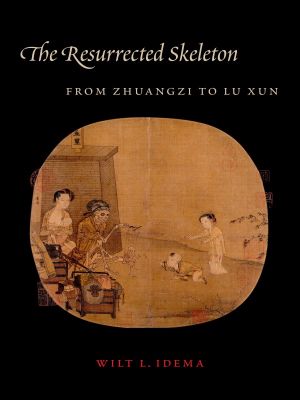The Resurrected Skeleton

- Authors
- Idema, Wilt L.
- Publisher
- Columbia University Press
- Tags
- rel065000 , lit008000 , religion , philosophy , literary criticism , asian , general , taoism (see also philosophy , taoist)
- ISBN
- 9780231165044
- Date
- 2014-07-08T00:00:00+00:00
- Size
- 17.97 MB
- Lang
- en
The first book in English to trace the resurrected skeleton, this text translates major adaptations while drawing parallels to Jesus’s encounter with a skull and the European tradition of the Dance of Death.
The Chinese philosopher Zhuangzi (369-286 B.C.E.) encountered a skull that later in a dream praises the pleasures of death over the toil of living. This anecdote became popular with poets in the second and third centuries and found renewed significance with the founders of Quanzhen Daoism. These philosophers turned the skull into a skeleton, a metonym for death and a symbol of the refusal of enlightenment. Popular throughout the Ming dynasty (1368-1644) and reenvisioned by the fiction writer Lu Xun (1881-1936), the legend echoes transformations in Chinese philosophy and culture. The first book in English to trace the resurrected skeleton, this text translates major adaptations while drawing parallels to Jesus’s encounter with a skull and the European tradition of the Dance of Death.
The Chinese philosopher Zhuangzi (369--286 B.C.E.) encountered a skull that later in a dream praises the pleasures of death over the toil of living. This anecdote became popular with poets in the second and third centuries and found renewed significance with the founders of Quanzhen Daoism. These philosophers turned the skull into a skeleton, a metonym for death and a symbol of the refusal of enlightenment. Popular throughout the Ming dynasty (1368--1644) and reenvisioned by the fiction writer Lu Xun (1881--1936), the legend echoes transformations in Chinese philosophy and culture. The first book in English to trace the resurrected skeleton, this text translates major adaptations while drawing parallels to Jesus's encounter with a skull and the European tradition of the Dance of Death.